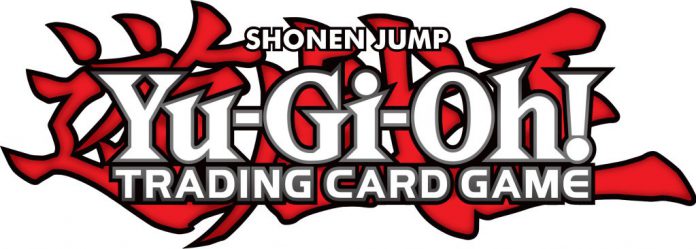In our Getting Started series, we talk about getting started in a variety of games and hobbies. Today we’re talking about one of the most popular TCGs in the world, Yu-Gi-Oh.
Do you play other card games and you’re looking to break into Yu-Gi-Oh!? Have you never played a card game before and remember Yu-Gi-Oh! from your childhood? If the answer to either of those questions is yes, then you came to the right place.
You may be thinking to yourself 1)” Why is Goonhammer covering Yu-Gi-Oh! in any capacity?” and 2) “Is this some cruel joke?” To answer your questions: 1) I have loved this game since I was a small child in elementary school and the mechanics of the game keep dragging me back in whenever I crawl away, and 2) Yes. Yes it is. I may be trekking out alone on this journey but I’ll be damned if I’m not going to try and drag you all with me.
Here we will discuss how to start playing the game, some background about Yu-Gi-Oh! as a whole, why you should play, and some different ways to play.
A Little Bit About Yu-Gi-Oh!
You probably know what Yu-Gi-Oh! is already, but here’s a refresher. Yu-Gi-Oh! is a Japanese trading card game developed by Konami, the makers of such classic video game series as Metal Gear Solid, Castlevania, and Gradius. Yu-Gi-Oh! started as a manga written by creator Kazuki Takahashi and it has evolved into an international card game with tournaments ranging from your local Official Tournament Store (OTS) to massive World Championship Qualifiers events that lead to an invitational World Championship in Japan.This tournament scene has been active since 2003.
The game is played on what is known as a “Field” with bespoke “Zones” for cards on the field to be played. The zones are as follows from Left to Right: a Field card zone, 5 Monster zones (drawn slightly wider than the other zones so monsters can be turned side-ways for Defense Position), 2 Extra Monster Zones (a space where monsters from the Extra Deck can be summoned), a Graveyard, an Extra Deck zone (where you put your funky 15 cards that you get to play based on conditions displayed on those cards), 5 Spell/Trap Card zones, and your deck. Cards can also be “Banished” which is not represented on the playmat, but players generally place their banished cards sideways above the Graveyard.
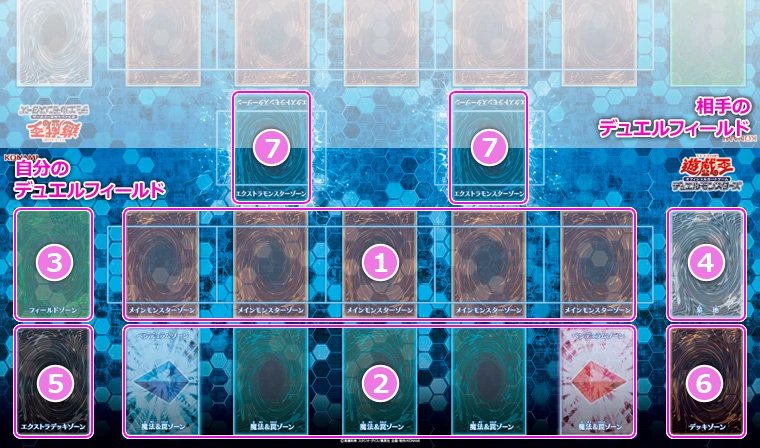
Why You Should Play
The main thing that brings me back into this game every time is the gameplay. It’s simple to understand when you’re first getting into it, and the complexity increases as you dive in further. There are no resources you need to worry about apart from the cards in your hand and almost everything you need to know is printed in the text box on your cards (this is why you see those cards with one million lines of text on them). Everything not printed on the cards can be found in the official rules from the website or on the QR codes found in the pre-constructed Structure decks.
Archetypes
Let’s talk about archetypes, because I absolutely love this aspect of Yu-Gi-Oh!. An Archetype refers to a set of cards that all have a shared string of text in their card names. Examples being: “Kaiju”, “Magical Musketeer”, and “Destiny”/”Elemental”/ ”Vision”/ ”Masked”/”Evil” “HERO” (this last one is often referred to as HERO on cards, but more commonly a card will specify which type of HERO it affects). This archetype system makes it super easy to build decks and each archetype is mechanically different. Going off of the examples I gave earlier, Kaiju are an archetype of monsters that summon themselves to your opponent’s field at the cost of sacrificing one of their monsters to do so, and once you do that you can summon a Kiaju to your board for free. The intent here is to create the feel of big Godzilla monster battles, and it achieves that wonderfully. The HERO archetype is one that excels at having HERO monsters in your deck band together to save the day, either by joining together to become a bigger monster, or by searching for each other through the deck.
The great thing about archetypes as a whole is that anyone can look at a set of monsters, decide they think the names are cool and the art is cool, and put a decently synergistic deck together. There are of course cards that you may want to omit because they slow the deck down, but on the whole deck building is extremely easy! This isn’t to say that deckbuilding is one archetype or nothing. In fact, throughout Yu-Gi-Oh!’s competitive history archetypes have been mixed and matched to create Frankenstein’s Monster-like decks just because those archetypes happen to have synergy in the way they want to achieve victory. In the May 2022 meta we see decks that are running a variety of different archetype tools at the absolute maximum deck size (60) because the cards are all individually good.
Deckbuilding
That brings us to deckbuilding. In Yu-Gi-Oh! there are generally two types of decks: combo decks and control decks. There are some decks that blur the line, but in general these are the two types. Combo decks are focused on spamming monsters to the board to create value off of their effects and building a board that your opponent then has to try and dismantle on their turn, or most likely lose. This is generally a “going first” strategy. One other way combo decks can play is through a “one-Turn Kill” (OTK) strategy. These decks generally like to go second, so they can build a board with a couple of powerful monsters in order to beat the living day lights out of your opponent. Conversely, control decks are slow and methodical. They also tend to want to go first, but instead of building a huge board to beat your opponent out on turn 2, control decks tend to create multiple walls and hurtles over several turns that the opponent has to clear. The win condition here is to drain the opposing deck of resources and beat them down with one or two mid-powered monsters.
Yu-Gi-Oh! is Forever
The last thing I’d like to present to you is that Yu-Gi-Oh! is an eternal format. What I mean by that is Yu-Gi-Oh! does not have rotating sets of cards like Standard does in Magic: The Gathering. If the card isn’t explicitly banned, then it is legal in tournament play. This is amazing for the long-term viability of your collection without having to switch to playing a completely different format just to play the cards you like. In every set cards might be released that see the return of some niche card from 20 years ago. The meta landscape of Yu-Gi-Oh! simply evolves naturally as cards are released. Whether this is due to the power creep that is bound to occur, or due to Konami hitting important cards with the banhammer, the game is constantly changing despite the perennial legality of the card pool.
Why do I care?
Yu-Gi-Oh! Was a huge part of my childhood. My brother and I started playing the game way back when Konami released the Yugi and Kaiba starter decks. Our elementary school offered a club after school where kids could learn and play the game. This club was run by an absolute man-child, but we enjoyed our time playing with other kids. I left Yu-Gi-Oh! Alone for a time in middle school, but picked it back up in college. That’s when my roommate and I started playing competitively. We had a lot of fun for the 3 years that we participated, but I started to grow tired with the meta and fell out one more time. BUT NOW I’M BACK AND I AIN’T GOIN’ NOWHERE.
Ways to Play
The most popular way to play Yu-Gi-Oh! is in tournaments at your local OTS with the eternal format. However it is not the only way to play. There are plenty of decks that players can construct out of lower power and cheaper cards that are perfect for playing “Kitchen Table” Yu-Gi-Oh!. If you’re just in it for the cool art and card names like “Superdreadnought Rail Cannon Juggernaut Liebe”, then this is for you.
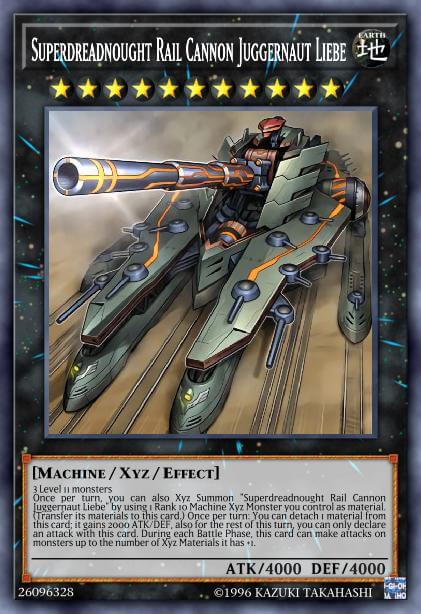
You can craft a deck for less than $50 and you and your friends can just throw cool monsters at each other. This was my preferred way to play when I was starting my initial revisit to the game in my college days. I built several decks, but the one I had the most fun with was “Superheavy Samurai”, an archetype that hated the use of Spell and Trap cards, but loved having monsters in Defense Position.
Up until early 2022, Konami hasn’t sanctioned any formats outside of this eternal format. Konami has plans to allow OTS’s to hold tournaments for several formats that fans have been clamoring for:
Time Wizard
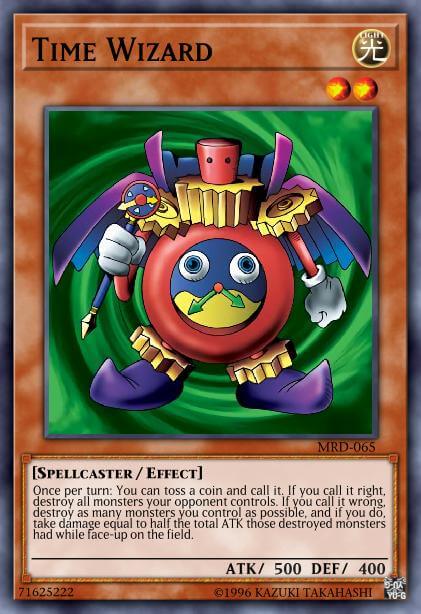
A format where the OTS decided on a banlist from a certain period in time and players must confirm to the cards legal as of that banlist (i.e. of the OTS decided on the May 2005 banlist, then played will follow that banlist for card legality and will only use cards available through April 2005).
Common Charity

A format very similar to Magic: The Gathering’s “Pauper” format, in which players can only use cards with a common rarity.
Heart of the Underdog
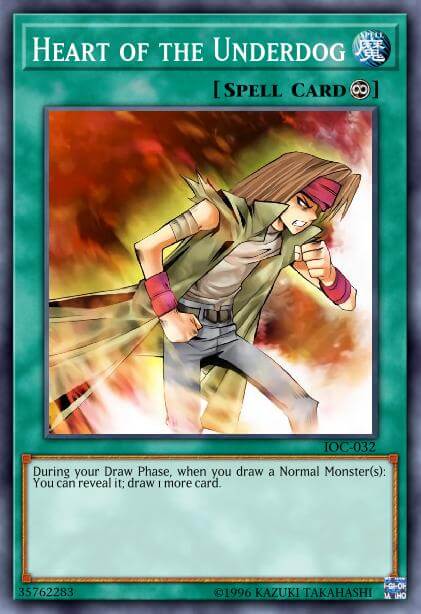
A format in which the OTS will determine which high power decks are not legal for play in the tournament. This format is a little vague as for what cards are legal, but the intent is to allow kitchen table style decks to be viable in a lower power event.
Deck Master
There is no card for this one…Sorry.
A format where each player chooses one card from their deck that acts as the titular Deck Master. This works similarly to Commander with the exception that your Deck Master’s continuous effects are active even if they aren’t on the field, and if your Deck Master is destroyed, you lose the game.
Digital
Additionally, there are also two official digital ways (Duel Links and Master Duel, I will discuss these in a separate article). There are also some unofficial simulators that one can find through a quick google search. The benefit of using these simulators being that playing and building decks is absolutely free, so you can test stuff out before you drop the cold hard cash.
It’s Your Move
So I’m sure after you’re just itching to get your hands on some of these pieces of paper and challenge some poor sap to a duel. Only problem is you don’t really know where to start. Well you’re in luck! I have some advice.
The first thing you should do is ask literally anybody who plays that you may know if they have spare cards they can give you. Some dollar box garbage that you can get your grubby mits on. If this doesn’t work you can ask your local store. They may have an entry level tournament for people just like you to learn the game, or they may have somebody at the store whose job it is to do just that!
Once you’ve tried that and maybe got a feel for the game, look at structure decks being sold by your store. Structure decks are great $15 entry points to the game and if you feel like splurging $45 you can make a pretty decent deck by combining 3 copies.
Conveniently, structure decks come with a neat QR code that leads you to a webpage with the core rules of the game. Read these. Reading is your most powerful tool in Yu-Gi-Oh!. If you read the rules and your cards you will beat 50% of your opponents on the die roll.
Test decks before you shell out the cash to buy more cards. The easiest way to do this is to use the simulators I mentioned earlier.
It’s Time To
D-D-D-DDDDuel. Get out there, look at the card pool, and craft a fun, cool, new Yu-Gi-Oh! deck!
Have any questions or comments? Drop us a note in the comments below or email us at contact@goonhammer.com.
